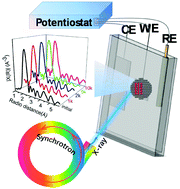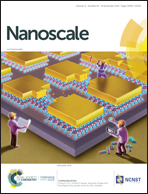Optimizing PtFe intermetallics for oxygen reduction reaction: from DFT screening to in situ XAFS characterization†
Abstract
Rational designing of catalysts to promote the sluggish kinetics of the cathode oxygen reduction reaction in proton exchange membrane fuel cells is still challenging, yet of crucial importance to its commercial application. In this work, on the basis of theoretical DFT calculations which suggest that order structured fct-phased PtFe (O-PtFe) with an atomic Pt shell exhibits superior electrocatalytic performance towards the ORR, the desired structure was prepared by using a scalable impregnation–reduction method. The as-prepared O-PtFe delivered enhanced activity (0.68 A mg−1Pt) and stability (73% activity retention after 10 000 potential cycles) compared with the corresponding disordered PtFe alloy (D-PtFe) and Pt. To confirm the excellent durability, in situ X-ray absorption fine structure spectroscopy was conducted to probe the local and electronic structure changes of O-PtFe during 10 000 cycle accelerated durability testing. We hope that this facile synthesis method and the in situ XAFS experiment could be readily adapted to other catalyst systems, facilitating the screening of highly efficient ORR catalysts for fuel cell application.



 Please wait while we load your content...
Please wait while we load your content...